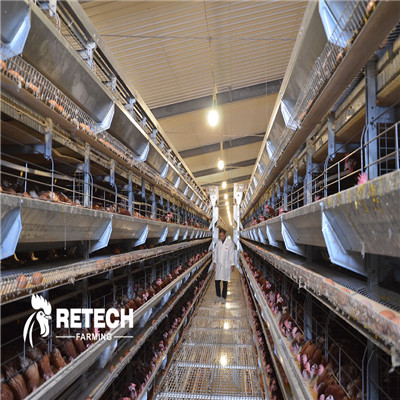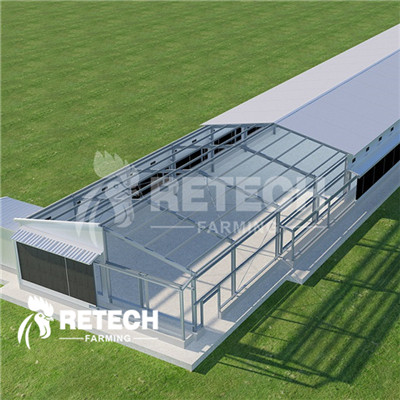A good microclimate in the house is the key to raising battery chicken cage laying hens. The microclimate in the house means that the air environment in the house is controllable.
What is the microclimate in the house? The microclimate in the house refers to the management of temperature, humidity and ventilation to create a good small environment for the chicken house that is not affected by the outside world and suitable for the growth of young chickens. This small environment is the microclimate in the house.
The microclimate control in the house refers to controlling the relationship between the temperature, humidity and ventilation in the house. For the rearing and management of young chickens, it is necessary to coordinate the relationship between humidity and ventilation under the condition of appropriate temperature control.
A good practice is to set the daily temperature curve of the whole period, take the temperature curve of the whole period as the standard, and then set the daily maximum temperature value and minimum temperature value, and make two curves based on the maximum temperature value and the minimum temperature. The temperature is controlled within the minimum temperature curve. Then set the minimum ventilation management method. The humidity control curve should also be set at the same time.
The main features of the battery chicken cage chicken house:
1. The problem of temperature difference between the upper and lower layers needs to be solved. The solution to the temperature difference between the upper and lower layers is to install a diversion fan on the roof in the middle of the chicken house, which can control the temperature difference between layers within 1°C.
2. The question of whether the oxygen supply of the chickens in the middle of the chicken house is sufficient. The effective measure to improve the intermediate oxygen supply is the wind speed of the air inlet and the uniform air window. At the same time, it is necessary to avoid the harm of the wind speed to the cold wind of the battery caged chickens on both sides. The preventive measure is to use a deflector, so that the cold wind can be controlled to fall into the aisle when it blows up and down, so that sufficient oxygen can reach the middle cage to ensure sufficient oxygen supply.
3.Stable and balanced negative pressure ventilation is the key to the success or failure of chicken raising in a battery chicken cage chicken house, and it is also a key measure for oxygen supply in the middle cage and cold air protection on both sides of the cage.
Negative pressure ventilation has two functions:
One is to ensure sufficient oxygen supply in the middle of the chicken house, negative pressure determines the air speed of the air inlet, and the air speed of the air inlet determines the sufficient oxygen supply in the middle cage.
The second is to ensure that the air in the chicken house is fresh. Negative pressure ventilation is a ventilation method that pulls out the dirty air first, and then the fresh air comes in, so that the air in the chicken house can be effectively circulated.
4.The battery chicken cage will have a great impact on the ventilation mode of the chicken house. Such as cage spacing, bird density and weight, house width and length ratio, chicken breeds, etc. will change the ventilation pattern, even in a standardized house, the ventilation of each house is not the same.
What is the microclimate in the house?
The microclimate in the house refers to the management of temperature, humidity and ventilation to create a good small environment for the chicken house that is not affected by the outside world and suitable for the growth of young chickens. This small environment is the microclimate in the house.
The microclimate control in the house refers to controlling the relationship between the temperature, humidity and ventilation in the house. For the rearing and management of young chickens, it is necessary to coordinate the relationship between humidity and ventilation under the condition of appropriate temperature control.
A good practice is to set the daily temperature curve of the whole period, take the temperature curve of the whole period as the standard, and then set the daily maximum temperature value and minimum temperature value, and make two curves based on the maximum temperature value and the minimum temperature. The temperature is controlled within the minimum temperature curve. Then set the minimum ventilation management method. The humidity control curve should also be set at the same time.
Post time: May-17-2022










